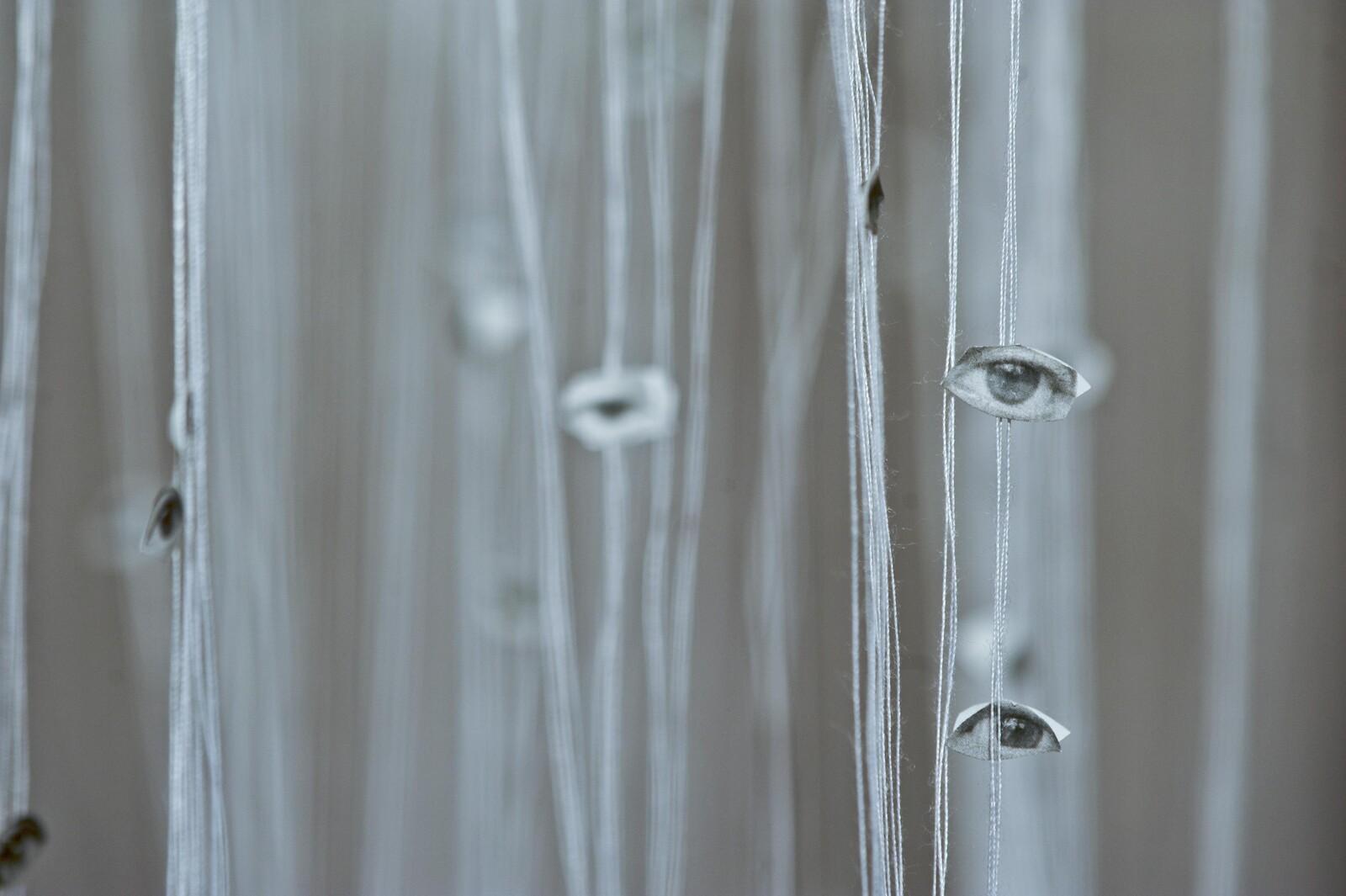July 8–December 15, 2016
Place du Château
87600 Rochechouart
France
Hours: Wednesday–Sunday 10am–6pm
T +33 5 55 03 77 77
contact.musee-public@haute-vienne.fr
Jane Alexander, Ghada Amer, Berry Bickle, Zoulikha Bouabdellah, Loulou Cherinet, Safaa Erruas, Pelagie Gbaguidi, Bouchra Khalili, Amal Kenawy, Kapwani Kiwanga, Nicene Kossentini, Mwangi Hutter, Michele Magema, Fatima Mazmouz, Julie Mehretu, Myriam Mihindou, Aida Muluneh, Wangechi Mutu, Otobong Nkanga, Tracey Rose, Berni Searle, Zineb Sedira, Sue Williamson, Billie Zangewa, Amina Zoubir
From July 8 to December 15, 2016, Rochechouart Museum of Contemporary Art (France) presents Lucy’s Iris, an exhibition of works by 25 female artists from Africa. Their highly diverse styles are represented in over 40 artworks that provide a glimpse of the remarkable originality of African art today and in this case particularly through works being created by female artists. Lucy, whose skeleton was discovered on African soil and who was for a long time thought to be the oldest ancestor of the human race, lends her name to this exhibition.
The most ancient man on Earth was for a long time believed to be… Lucy! Working in Ethiopia, paleoanthropologist Donald Johanson and graduate student Tom Gray discovered fragments of a skeleton in 1974 which after excavation by their team was identified as that of a short female only one meter tall. Dating from 3.2 million years ago, scientists considered the find as evidence of the missing link in human evolution, a theory that lasted several decades, and under her common name of “Lucy” she became known in popular mythology as the Mother of Mankind. The name came from “Lucy in the Sky with Diamonds” by the Beatles, then a hit with members of the excavation team. Retrospectively, however, the choice can be seen as a symptom of an Occidental world view, especially during a period of decolonization and independence when it might have been more appropriate to draw on local culture for inspiration. Indeed shortly afterwards the Ethiopians renamed Lucy “Dinkinesh,” which means “You are marvelous” in the Amharic language. However, despite her renown extending well outside scientific circles, Lucy paradoxically represents here two under-considered groups of humans, namely Africans and women. Against this historical backdrop, the exhibition project began by adopting Lucy’s point of view, as its symbolic teenage grandmother of Mankind. Therefore the exhibition sets out to underline the roles of 25 female artists who today are active in putting Africa back on the art world map.
This exhibition comes at a time when African art and artists come to be better known around the world and the question of feminism and female African artists is now quite rightly being raised ever more insistently. Hence the present selection of highly individual artists for whom the label “African contemporary art” may be only part of their identity. Their origins and workplaces certainly range from the Maghreb to South Africa as well as across the vast African diaspora and their work is just as varied, covering painting, drawing, photography and sculpture alongside video, performance, tapestry and installations. Whilst reflecting diverse cultural and artistic contexts certain themes often recur such as identity, body, environment, historical legacy, memory, post-colonialism, migration, the past and the future. Under the gaze of Lucy’s eyes, we can observe how each artist makes space for her own personal vision in this heady mix of politics and poetry from out of Africa.
Lucy’s Iris. Contemporary African Women Artists is the second version for El iris de Lucy, an exhibition initiated by the Museo de Arte Contemporáneo de Castilla y León (Spain). It was conceived by Orlando Britto Jinorio, head of the CAAM (Centro Atlántico de Arte Moderno) at Las Palmas de Gran Canaria (Canary Islands, Spain). The exhibition is cocurated in Rochechouart Museum of Contemporary Art by Orlando Britto Jinorio and Annabelle Ténèze. Lucy’s Iris is Annabelle Ténèze’s last exhibition as Rochechouart Museum of Contemporary Art’s Director. She has been recently appointed Director of Les Abattoirs in Toulouse (France).

